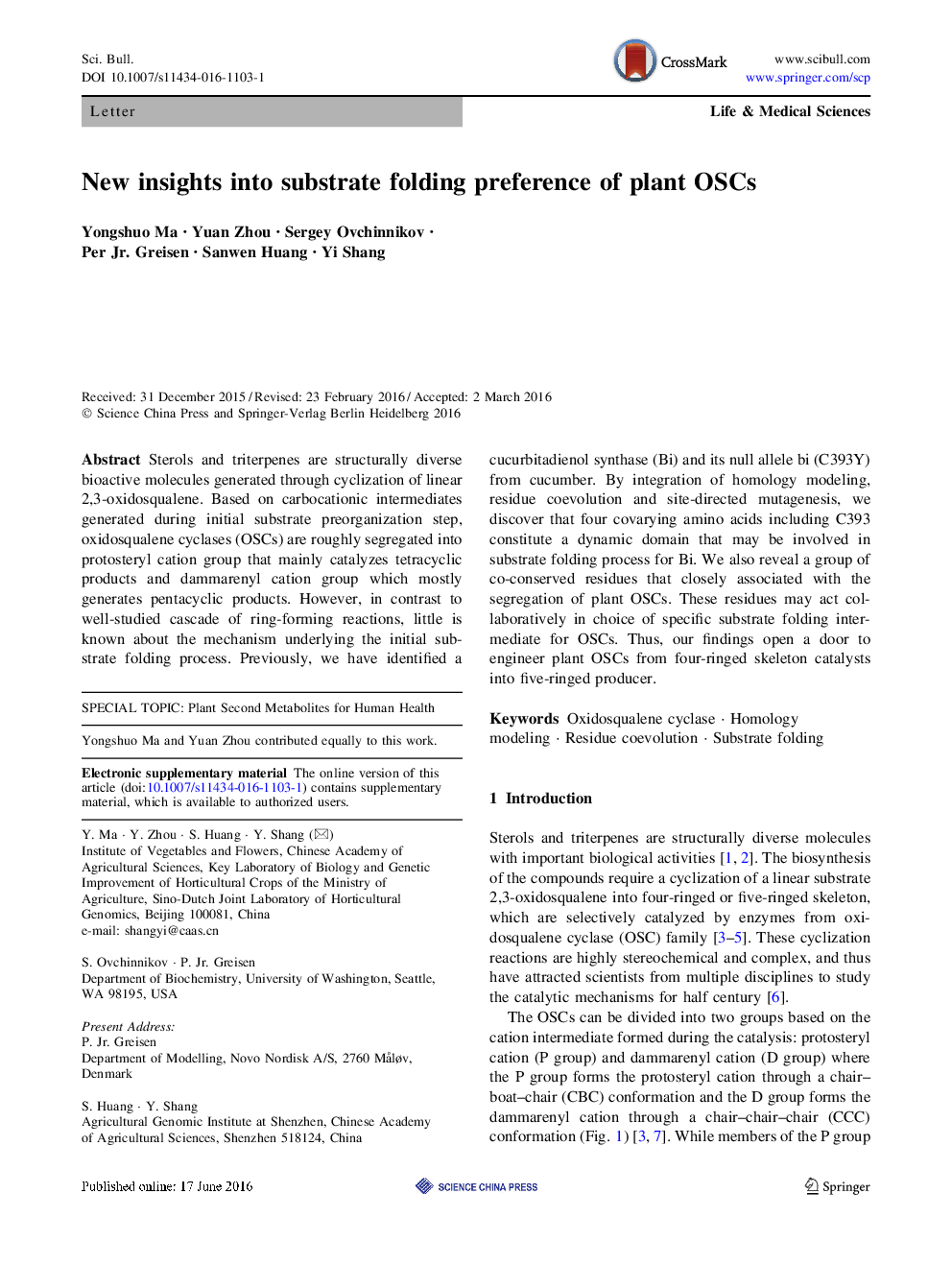| Article ID | Journal | Published Year | Pages | File Type |
|---|---|---|---|---|
| 5788847 | Science Bulletin | 2016 | 6 Pages |
Abstract
Sterols and triterpenes are structurally diverse bioactive molecules generated through cyclization of linear 2,3-oxidosqualene. Based on carbocationic intermediates generated during initial substrate preorganization step, oxidosqualene cyclases (OSCs) are roughly segregated into protosteryl cation group that mainly catalyzes tetracyclic products and dammarenyl cation group which mostly generates pentacyclic products. However, in contrast to well-studied cascade of ring-forming reactions, little is known about the mechanism underlying the initial substrate folding process. Previously, we have identified a cucurbitadienol synthase (Bi) and its null allele bi (C393Y) from cucumber. By integration of homology modeling, residue coevolution and site-directed mutagenesis, we discover that four covarying amino acids including C393 constitute a dynamic domain that may be involved in substrate folding process for Bi. We also reveal a group of co-conserved residues that closely associated with the segregation of plant OSCs. These residues may act collaboratively in choice of specific substrate folding intermediate for OSCs. Thus, our findings open a door to engineer plant OSCs from four-ringed skeleton catalysts into five-ringed producer.
Related Topics
Physical Sciences and Engineering
Chemistry
Chemistry (General)
Authors
Yongshuo Ma, Yuan Zhou, Sergey Ovchinnikov, Per Jr., Sanwen Huang, Yi Shang,
